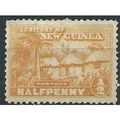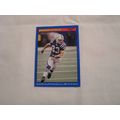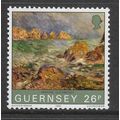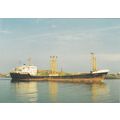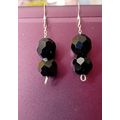Weobley, Herefordshire -11th Century Village real photo Friths postcard c.1950s
- Condition : Used
- Dispatch : 2 Days
- Brand : None
- ID# : 131925212
- Quantity : 1 item
- Views : 365
- Location : United Kingdom

- Seller : justthebook (+1704)
- Barcode : None
- Start : Sun 21 Sep 2014 16:31:47 (EDT)
- Close : Run Until Sold
- Remain : Run Until Sold
Checks/Cheques
 for 1 item(s) edit
for 1 item(s) edit
Shipping Calculator
More Listings from This Seller view all
Seller's Description
- Postcard
- Picture / Image: '11th Century Black and White Village of Weobley', Herefordshire - real photo type?
- Publisher: Friths series
- Postally used: no - has stamp but no messages and not sent
- Stamp: 3d purple Wilding - unfranked - corner bend
- Postmark(s): n/a
- Sent to: n/a
- Notes / condition:
Please ask if you need any other information and I will do the best I can to answer.
Image may be low res for illustrative purposes - if you need a higher definition image then please contact me and I may be able to send one. No cards have been trimmed (unless stated).
------------------------------------------------
Postage & Packing:
Postage and packing charge should be showing for your location (contact if not sure).
No additional charges for more than one postcard. You can buy as many postcards from me as you like and you will just pay the fee above once. Please wait for combined invoice. (If buying postcards with other things such as books, please contact or wait for invoice before paying).
Payment Methods:
UK - PayPal, Cheque (from UK bank) or postal order
Outside UK: PayPal ONLY (unless otherwise stated) please. NO non-UK currency checks or money orders (sorry).
NOTE: All postcards are sent in brand new stiffened envelopes which I have bought for the task. These are specially made to protect postcards and you may be able to re-use them. In addition there are other costs to sending so the above charge is not just for the stamp!
I will give a full refund if you are not fully satisfied with the postcard.
----------------------------------------------
Text from the free encyclopedia WIKIPEDIA may appear below to give a little background information (internal links may not work) :
*************
Weobley is a black and white village in Herefordshire, England.
The name possibly derives from 'Wibba's Ley', a ley being a woodland glade and Wibba being a local Saxon landowner. In the Domesday Book the village name was transcribed as Wibelai. It is still pronounced as ""Web-ley"" (the spelling being similar to nearby Leominster which also does not pronounce the letter 'o' in its name).
In the Saxon period it is known that brewing and glove-making were carried out in the village.
The village has an historic church, the Church of St Peter and St Paul, with a Norman south doorway, a 13th-century chancel and 14th-century tower and a spire that is the second-tallest in the county; castle ruins; a high school and a primary school with a pioneering system of heating.
In the village is 'the Throne', a large 400 year old box - King Charles I spent the night here on 5 September 1645, after the Battle of Naseby during the English Civil War.
It was once incorporated as a borough, sending two Members of Parliament to the House of Commons until the Reform Act 1832, (see Weobley (UK Parliament constituency) and once had a borough corporation.
In 2001 the artist Walenty Pytel completed a sculpture of a magpie for the village (a magpie is the village's emblem). The sculpture was commissioned after the village won the Calor Gas/Daily Telegraph Great Britain Village of the Year in 1999.[1]
The term black and white village refers to several old English villages, typically in the county of Herefordshire, West Midlands of England.
The term ""black and white"" derives from presence of many timbered and half-timbered houses in the area, some dating from medieval times. The buildings' black oak beams are exposed on the outside, with white painted walls between. The numbers of houses surviving in this style in the villages creates a very distinctive impression and differs from building styles outside this area.
It was probably[citation needed] only during the late Victorian age that it become fashionable to finish the buildings in a black and white veneer. In earlier times, the oak would not have been stained, but retained its natural colour and the walls would have reflected the colour of the local clay, generally a pink colour, rather than a white whitewash lime.
A 40-mile (64 km) circular tourist trail known as the ""Black and White Village Trail"" was developed in 1987 as a means of encouraging tourists to take a closer look at the Herefordshire villages, heritage and countryside. The trail was developed mainly for travel by car, but it is also possible to make the journey by bicycle. Many coach tours now take in the trail also.
type=real photographic (rp)
city/ region=weobley
period=post-war (1945-present)
publisher=friths
postage condition=unposted
number of items=single
size=standard (140x89 mm)
Listing Information
| Listing Type | Gallery Listing |
| Listing ID# | 131925212 |
| Start Time | Sun 21 Sep 2014 16:31:47 (EDT) |
| Close Time | Run Until Sold |
| Starting Bid | Fixed Price (no bidding) |
| Item Condition | Used |
| Bids | 0 |
| Views | 365 |
| Dispatch Time | 2 Days |
| Quantity | 1 |
| Location | United Kingdom |
| Auto Extend | No |











